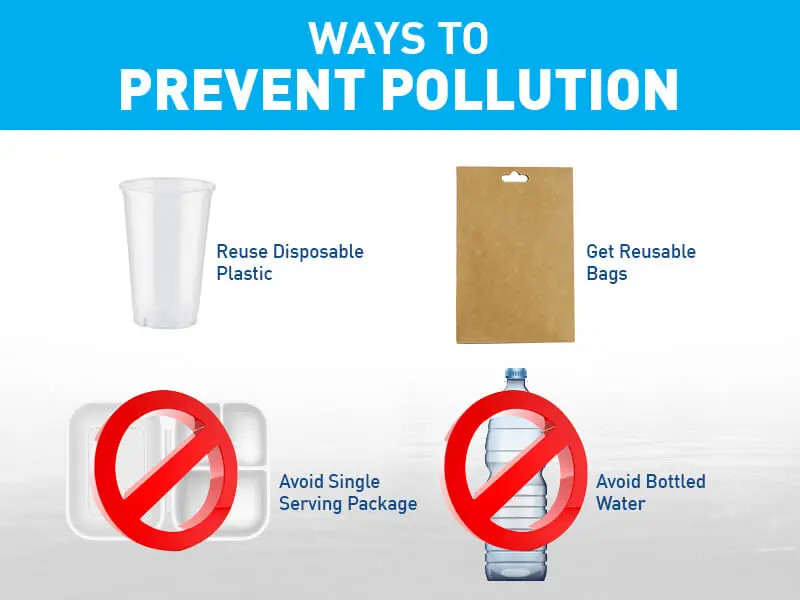Navigation apps for outdoors are specialized software applications designed to assist users in navigating through natural environments such as forests, mountains, deserts, and other remote or off-road areas. These apps provide a range of essential features and tools to help individuals explore and navigate the great outdoors safely and efficiently.
Key functionalities of outdoor navigation apps typically include GPS tracking to pinpoint the user’s location on a map, topographic maps displaying terrain details, waypoints to mark specific locations or destinations, and route planning tools to create paths or trails. They often offer real-time information on factors like elevation, distance traveled, and estimated time of arrival, enhancing users’ situational awareness.
Some advanced outdoor navigation apps may incorporate additional features like offline maps, geocaching support, weather forecasts, and emergency SOS capabilities. These apps cater to hikers, campers, backpackers, hunters, and outdoor enthusiasts, empowering them to plan, execute, and enjoy outdoor adventures with confidence and precision while ensuring their safety in remote and challenging environments.
Development History of Navigation Apps for Outdoors
Navigation apps for outdoors have evolved significantly over the years, driven by advancements in technology and the increasing popularity of outdoor activities such as hiking, camping, biking, and more. Here is a brief overview of the development history of navigation apps for outdoor enthusiasts:
1. Paper Maps and Compasses (Ancient Times to 20th Century)
- For centuries, people relied on paper maps and compasses for outdoor navigation.
- These tools provided basic guidance, but they required map-reading skills and a good sense of direction.
2. GPS Technology (1970s and 1980s)
- The development of the Global Positioning System (GPS) by the United States Department of Defense revolutionized outdoor navigation.
- GPS satellites allowed users to determine their precise location anywhere on Earth.
3. Handheld GPS Devices (1990s)
- In the 1990s, handheld GPS devices became available to consumers.
- Companies like Garmin and Magellan produced GPS receivers designed for outdoor enthusiasts.
- These devices offered basic navigation features, such as tracking waypoints and routes.
4. Early Mobile GPS Apps (Early 2000s)
- With the proliferation of smartphones, developers began creating GPS-based apps for mobile devices.
- Early apps like MapQuest and Google Maps provided basic navigation but lacked specific outdoor features.
5. Dedicated Outdoor GPS Devices (2000s)
- Companies like Garmin expanded their outdoor GPS offerings, creating devices tailored to hikers, bikers, and other outdoor adventurers.
- These devices included features such as topographic maps, geocaching support, and rugged designs.
6. Emergence of Specialized Outdoor Apps (2010s)
- The 2010s saw the emergence of specialized outdoor navigation apps designed for hiking, biking, and other outdoor activities.
- Apps like AllTrails, Gaia GPS, and Komoot gained popularity, offering detailed trail maps, offline capabilities, and community-driven content.
7. Integration of Location Services (2010s)
- Smartphone operating systems (e.g., iOS and Android) integrated location services, making it easier for developers to create outdoor navigation apps.
- These apps could access the device’s GPS, compass, and accelerometer for more accurate tracking.
8. Advanced Features (2010s-Present)
- Modern outdoor navigation apps offer advanced features like real-time weather updates, tracking and sharing of user-generated routes, elevation profiles, and more.
- They often include offline map downloads for remote areas with limited connectivity.
9.Wearable Devices (2010s-Present)
- Wearable devices like smartwatches and fitness trackers also started integrating outdoor navigation features.
- These devices can display real-time data and provide turn-by-turn directions right on users’ wrists.
10.Augmented Reality (AR) and Virtual Reality (VR) (2020s)
- As technology advances, AR and VR are being integrated into outdoor navigation apps to provide immersive experiences.
- AR can overlay navigation information onto the real world, enhancing the user’s understanding of their surroundings.
The development of navigation apps for the outdoors continues to evolve, with a focus on improving accuracy, user-friendliness, and integration with other outdoor gear and technologies. These apps have become indispensable tools for outdoor enthusiasts, helping them plan and navigate their adventures safely and efficiently.
Examples of Navigation Apps for Outdoors
There were several navigation apps for outdoor activities. However, keep in mind that the availability and popularity of apps may change over time. Here are some examples of outdoor navigation apps along with their websites:
1. AllTrails
- Website: AllTrails
- AllTrails is known for its extensive database of hiking and trail maps, making it a popular choice for hikers and outdoor enthusiasts. It provides detailed information about trails, including user reviews and photos.
2. Gaia GPS
- Website: Gaia GPS
- Gaia GPS is a comprehensive mapping and navigation app for hiking, hunting, off-roading, and other outdoor activities. It offers topographic maps, route planning, and tracking features.
3. Komoot
- Website: Komoot
- Komoot is a versatile app for outdoor adventures, including hiking, cycling, and mountain biking. It provides detailed route planning, offline maps, and turn-by-turn navigation.
4. ViewRanger
- Website: ViewRanger
- ViewRanger is an app for hiking and outdoor navigation that offers a wide range of maps, including topographic maps and OpenStreetMap data. It also supports route planning and tracking.
5. CalTopo
- Website: CalTopo
- CalTopo is primarily a web-based platform for creating custom topographic maps and planning outdoor routes. It’s popular among backcountry and wilderness enthusiasts.
6. Outdooractive
- Website: Outdooractive
- Outdooractive is a European-focused app for outdoor sports and activities. It covers a wide range of activities, including hiking, biking, skiing, and more, with detailed route planning and navigation.
7. MapOut
- Website: MapOut
- MapOut is an iOS app for offline mapping and outdoor navigation. It allows users to download maps and plan routes without needing a constant internet connection.
Uses of Navigation Apps for Outdoors
Navigation apps designed for outdoor activities serve a variety of purposes, helping individuals explore and navigate the great outdoors safely and efficiently. Here are some common uses of navigation apps for outdoor adventures:
- Hiking and Backpacking: Navigation apps can provide detailed trail maps, elevation profiles, and GPS tracking to help hikers and backpackers plan their routes, stay on the trail, and avoid getting lost. They often include information about landmarks, water sources, and campsites.
- Cycling: Cyclists can use these apps to find bike-friendly routes, track their rides, and monitor their performance metrics such as speed, distance, and elevation gain. They may also offer turn-by-turn directions to guide riders through unfamiliar areas.
- Mountain Biking: Specifically tailored for mountain biking, these apps often include trail ratings, difficulty levels, and information about features like jumps and drops. They can help riders choose trails that match their skill level.
- Trail Running: Trail runners can benefit from navigation apps to find running routes, record their runs, and monitor their pace and distance. These apps may also offer safety features like real-time tracking.
- Camping: Campers can use navigation apps to locate campgrounds, plan camping trips, and access information about amenities, fees, and availability. They can also mark the location of their campsite for easy return.
- Geocaching: Geocachers rely on navigation apps to locate hidden caches using GPS coordinates. These apps often include geocaching tools such as waypoint creation and tracking of found caches.
- Fishing: Anglers can use navigation apps to find fishing spots, track their catches, and access information about fishing regulations and species in different bodies of water.
- Hunting: Hunters can benefit from apps that provide topographical maps, hunting unit boundaries, and real-time location tracking to help plan and execute successful hunts while adhering to hunting regulations.
- Rock Climbing: Climbers can use navigation apps to find climbing areas, access route information, and record their climbs. Some apps also provide safety features like emergency call capabilities.
- Boating and Kayaking: Boaters and kayakers can rely on navigation apps for marine charts, tide information, and navigation aids to safely navigate rivers, lakes, and coastal areas. They may also offer features like waypoint marking and route planning.
- Off-Roading: Off-road enthusiasts can use these apps to find off-road trails, monitor their vehicle’s location, and record their adventures. Some apps offer features like terrain information and difficulty ratings.
- Wildlife Watching: Nature enthusiasts can use navigation apps to explore wildlife-rich areas and record wildlife sightings. Some apps include information about local fauna and their habitats.
- Backcountry Skiing and Snowboarding: These apps can help backcountry skiers and snowboarders find suitable routes, assess avalanche risks, and track their descents while enjoying the winter wilderness.
- General Exploration: For general outdoor exploration, these apps provide access to detailed maps, GPS coordinates, and navigation tools to help adventurers find their way in unfamiliar terrain.
- Emergency Situations: Many navigation apps offer SOS features and real-time location sharing, which can be crucial in emergencies, allowing users to call for help or share their location with loved ones.
Navigation apps for outdoor activities vary in features and suitability for different pursuits, so it’s important to choose one that aligns with your specific needs and preferences. Additionally, it’s crucial to have a backup plan, carry paper maps, and be prepared for unexpected challenges when exploring the outdoors.
Facts, Features, and Functions of Navigation Apps for Outdoors
Navigation apps for outdoors, also known as outdoor GPS apps or hiking apps, are designed to help users navigate and explore outdoor environments like hiking trails, biking routes, and backcountry areas. Here are some facts, features, and functions commonly associated with these apps:
Facts:
- Wide Range of Options: There are many outdoor navigation apps available for both Android and iOS devices, catering to a variety of outdoor activities such as hiking, biking, camping, and more.
- Offline Capabilities: Many outdoor navigation apps offer offline maps and navigation, allowing users to download maps in advance and use them without an internet connection. This is essential for remote areas with limited or no cellular coverage.
- GPS Reliance: These apps rely on the GPS functionality of your device to provide accurate location tracking and navigation. Some apps may also use additional sensors like a barometer or compass for enhanced accuracy.
- Community Contributions: Some apps, like Gaia GPS and AllTrails, allow users to contribute to the app’s database by recording their tracks and adding information about trails and waypoints.
Features:
- Mapping and Navigation: Outdoor navigation apps provide detailed maps with topographical information, trail routes, and waypoints. Users can plan routes and receive turn-by-turn directions while on the trail.
- Offline Maps: Download maps for offline use to ensure navigation is possible even when there’s no internet connection.
- GPS Tracking: Real-time tracking of your location, allowing you to see your progress on the trail and ensure you’re on the right path.
- Waypoints and Markers: Users can create waypoints to mark specific locations, such as trailheads, campsites, or scenic viewpoints. Some apps also support custom markers.
- Elevation and Altitude Data: Many apps provide elevation profiles, altitude information, and even barometric pressure data for accurate altitude tracking.
- Weather Information: Some apps offer weather forecasts and current conditions for your location or planned route to help you prepare for changing weather conditions.
- Sharing and Social Features: Users can often share their trips and experiences with friends and the outdoor community. You can also import or export GPX files, which are commonly used for sharing trail data.
Functions:
- Route Planning: Users can plan routes by selecting waypoints, trails, or points of interest on the map. The app then calculates the best path based on your preferences.
- Recording Tracks: Apps allow you to record your hiking or biking tracks, which can be saved for future reference or shared with others.
- Safety Features: Some apps include safety features like emergency contact information, SOS signals, and location sharing with trusted contacts.
- Statistics and Analytics: View detailed statistics about your outdoor activities, such as distance traveled, elevation gain, and average speed.
- Customization: Users can often customize map layers, map styles, and data fields displayed on the screen to suit their preferences.
- Geocaching: Some apps support geocaching, allowing users to search for hidden caches and treasures in the outdoors.
- Training and Workouts: Some apps include training features for activities like running or cycling, providing workout plans and performance tracking.
When choosing an outdoor navigation app, consider the specific features that align with your outdoor activities and the regions you plan to explore, as well as the app’s compatibility with your device and whether it meets your offline navigation needs.
Conclusion
Navigation apps for outdoor activities have revolutionized the way individuals explore and navigate the great outdoors. With their user-friendly interfaces, real-time tracking, and comprehensive maps, these apps have become indispensable tools for hikers, campers, and adventurers. They not only enhance safety by providing accurate location information but also enrich the overall outdoor experience by offering valuable insights into terrain, weather conditions, and points of interest. However, users should exercise caution, as reliance on technology should be complemented by traditional navigation skills to ensure a safe and enjoyable outdoor adventure. Ultimately, these apps empower outdoor enthusiasts to embark on memorable journeys with confidence and convenience.







Leave a Reply